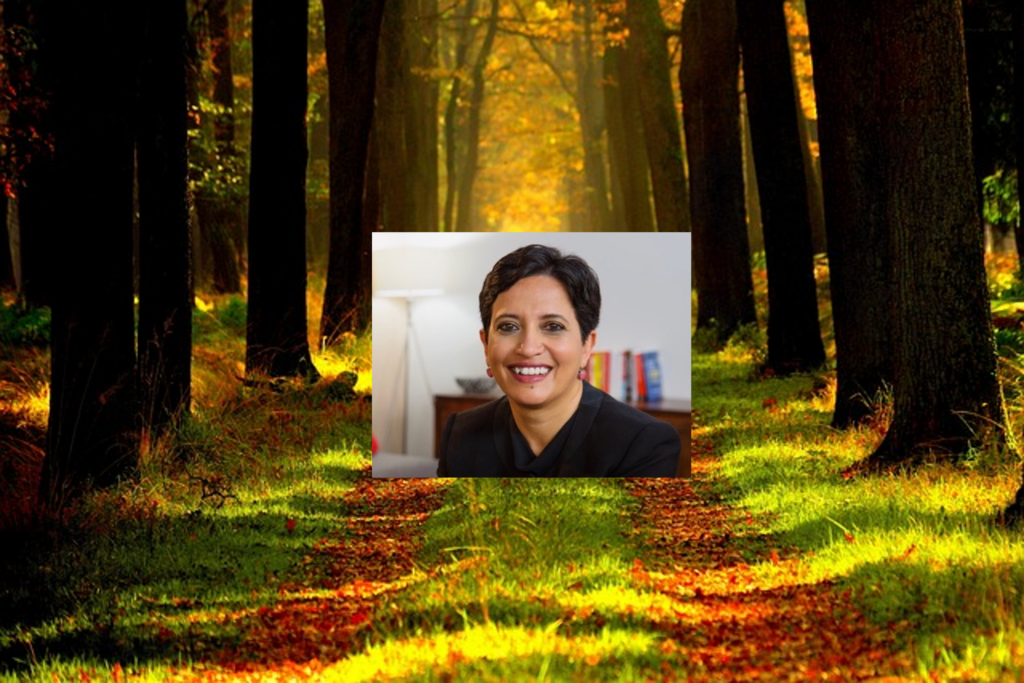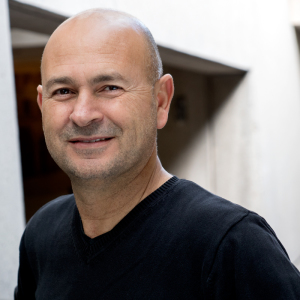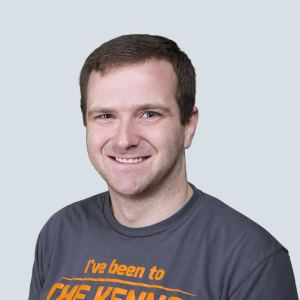Entrepreneur Journeys
The Startup Velocity Question: What Hinders Acceleration in VC Funded Companies?

I have been running 1Mby1M since 2010. I find myself saying to entrepreneurs ad nauseam that VCs want to invest in startups that can go from zero to $100 million in revenue in 5 to 7 years.
Startups that do not have what it takes to achieve velocity should not be venture funded.
Experienced VCs, over time, have developed heuristics to gauge what constitutes a high growth venture investment thesis.
>>>1Mby1M Udemy Courses with Sramana Mitra: Bootstrapping

Over the course of two years, we have released over 70 courses on Udemy with the aim to democratize entrepreneurship education at scale globally. This series of posts aims to help you find the one you need easily and provide you with discount coupons.
>>>Bootstrapping to $15 Million in Three Years: Connatix CEO David Kashak (Part 1)
If you haven’t already, please study our Bootstrapping Course and Investor Introductions page.
Extraordinarily tight, disciplined strategy and execution has enabled David to build a tremendously fast growth company with a small team. A lot to learn!
Sramana Mitra: Let’s start at the very beginning of your journey. Where are you from? Where were you born, raised, and in what kind of background?
David Kashak: I was born in Israel. I grew up in Israel and studied engineering at Tel Aviv University. After studying, I started as a programmer in a cyber security company in Israel. At one point, they offered to relocate me to New York. That offer was very interesting because I wanted to get more exposure to business. I moved to New York. >>>
Featured Videos
Can 1M/1M Help Me Raise Money?
How Does 1M/1M Democratize Entrepreneurship Education?
How Does 1M/1M Democratize Management Consulting?
When Is The Right Time To Join 1M/1M?
Can 1M/1M Help Me With Business Development?
Can 1M/1M Help Me With Market Sizing?
Can 1M/1M Help Me Validate My Product?
Will I Have Private 1-on-1 Sessions In 1M/1M?
How Does 1M/1M Help Entrepreneurs Connect With Silicon Valley?
Mentoring or Consulting?
Why Does 1M/1M Charge $1000 a Year?
Why Does 1M/1M Partner With Local Organizations?
Why Don\’t Mentoring Networks Work?
Why Is It Important To Study With 1M/1M Now?
Dan Stewart Story
Vikrant Mathur Story
Bootstrapping Using Services: James Kane, CEO of RWS (Part 1)
If you haven’t already, please study our Bootstrapping Course and Investor Introductions page.
We’re big believers in Bootstrapping Using Services, as you know. Here’s yet another story of an entrepreneur who has scaled to over $10 million in revenue using the method.
Sramana Mitra: Let’s start at the very beginning of your journey. Where are you from? Where were you born, raised, and in what kind of background?
James Kane: I grew up in a very small town in far northern New York. It’s a college town of about 2,000 people. My father was a university professor. He taught Mechanical Engineering at Clarkson University. >>>
Bootstrapping to Inflection: Dan Stewart, CEO of Happy Grasshopper (Part 1)
If you haven’t already, please study our Bootstrapping Course and Investor Introductions page.
Dan Stewart is a 1M1M entrepreneur. Read how he has navigated his way to an inflection point that has brought him to the cusp of 4x growth in 2017.
Sramana Mitra: Let’s start at the very beginning of your journey. Where are you from? Where were you born, raised, and in what kind of background?
Dan Stewart: My family moved around quite a lot as I was growing up. I rarely stayed in a school for more than a year. That took me from West Virginia and Chicago, down to Florida. >>>
A Serial Entrepreneur’s Journey: Moshe Vaknin, CEO of YouAppi (Part 1)
If you haven’t already, please study our Bootstrapping Course and Investor Introductions page.
Moshe has been doing startups for 18 years now. Some have worked, some not so well. This time around, he is building something bigger and more robust than his prior outings. Read Moshe Vaknin’s inspiring journey through startup land.
Sramana Mitra: Let’s start at the very beginning of your journey. Where are you from? Where were you born, raised, and in what kind of background?
Moshe Vaknin: I was born in Israel and grew up in a city by the beach called Ashkelon. It finds a mention in the Bible. Samson and Delilah were from that city. I was born there and grew up there until the age of 18. I went to the military and spent three years there. After you finish with military, you typically don’t know what to do in life. >>>
Capital Efficient Entrepreneurship from Utah: Ben Dilts, Founder and CTO of Lucid Software (Part 1)
If you haven’t already, please study our Bootstrapping Course and Investor Introductions page.
Utah is becoming a wonderful hub for capital efficient technology entrepreneurship. People are not as delusional about artificial Unicorns, gratuitous fundraising, and high burn rates. They focus, instead, on fundamentals.
Sramana Mitra: Let’s start at the very beginning of your journey. Where are you from? Where were you born, raised, and in what kind of background?
Ben Dilts: I was actually born here in Salt Lake City, but my parents moved to Pennsylvania. I grew up just outside of Harrisburg, Pennsylvania since I was about two years old until I left for college. I came out to Utah again to go to school. I came out to Brigham Young University to study Computer Science. I fell in >>>
Raising Money From Eighty Investors and Steering to a Successful Exit: Ludovic Huraux, CEO of Attractive World (Part 1)
If you haven’t already, please study our Bootstrapping Course and Investor Introductions page.
Entrepreneurs have done crowd funding before the term crowd funding existed. Ludovic’s story is a very interesting case in point.
Sramana Mitra: Let’s start by going to the very beginning of your personal journey. Where are you from? Where were you born, raised, and in what kind of background?
Ludovic Huraux: I was born in Paris in 1982. I’m almost 34 years old. I’ve worked in finance with a private equity firm. I was very lucky to be involved in a fund. I was only 22 years old back then and I had a lot of responsibilities. I was a Board Member of a company with hundreds of employees. I just wanted to create my own company. >>>
Scaling a Cloud-Based Disaster Recovery Business in Silicon Valley: Axcient CEO Justin Moore (Part 1)
If you haven’t already, please study our Bootstrapping Course and Investor Introductions page.
Justin tried his hand in other businesses and never had the time to go back and finish his degree at Stanford. He learnt business on the job. Today, he has a thriving Disaster Recovery Cloud venture, for which he has raised over $60 million. The company has not IPO’d or exited yet. Instead, it is moving upmarket from its SME customer roots.
Sramana Mitra: Let’s start at the very beginning of your story. Where are you from? Where were you born and raised? What is your backstory?
Justin Moore: I was born and raised in Manhattan. I moved to London when I was in my early to mid teens and then came out to California for college. >>>
Winning Against Heavily-Funded Competitors: Al Lalani, CEO of Social Annex (Part 1)
If you haven’t already, please study our Bootstrapping Course and Investor Introductions page.
We often get this question: how do you compete with a bootstrapped startup against heavily venture-funded competitors. We’ve done other stories on this topic. Here’s one that will give you additional perspective.
Sramana Mitra: Let’s start at the very beginning of your journey. Where are you from? Where were you born, raised, and in what kind of background?
Al Lalani: I was born in India. I moved here about 15 years ago. I was 21 when I first moved to the United States. I have an engineering background. I was hired by a company based in Los Angeles. This was around the 1999 timeframe around a year before the dot-com bust. The company had raised around $1 million. At >>>
Bootstrapping to $20 Million: Jagan Reddy, CEO of Leeyo Software (Part 1)
If you haven’t already, please study our Bootstrapping Course and Investor Introductions page.
Jagan built a niche software that solved a very specific problem and started selling it to enterprises for a lot of money. This story is a textbook case study of how well you can scale with no outside financing if you can identify a burning pain point in customers who are willing to pay a LOT to solve that pain.
Sramana Mitra: Let’s start at the very beginning of your journey. Where were you born, raised, and in what kind of background?
Jagan Reddy: I was born in India. All my schooling was done in India.
Sramana Mitra: Where in India?
Jagan Reddy: In Chennai. My schooling was all done in Chennai. >>>
Morphing a B-to-C Idea to a B-to-B Business: Andrew Witkin, CEO of StickerYou (Part 1)
If you haven’t already, please study our Bootstrapping Course and Investor Introductions page.
Andrew started with a B-to-C idea but has built a business that is primarily B-to-B from a revenue standpoint. Learn more about the nuances.
Sramana Mitra: Let’s start at the very beginning of your journey. Where are you from? Where were you born, raised, and in what kind of background?
Andrew Witkin: I was born in Toronto, Canada. My mom was a German immigrant and my dad was a Canadian citizen who happens to be Jewish. I grew up in a pretty loving family. I went through school and then decided to enter into an undergraduate business program because I was most intrigued with business. I went out to a school in eastern Canada.
In my final year, I actually went to the US and attended a US school. I was in Providence, Rhode Island in my final year. I found the pulse of >>>


